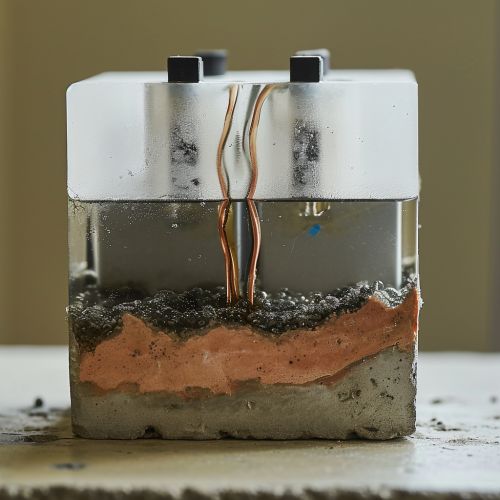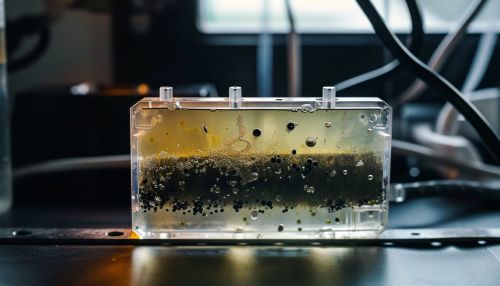Single-Chamber Microbial Fuel Cells
Introduction
A Microbial Fuel Cell (MFC) is a bio-electrochemical system that harnesses the power of respiring microbes to convert organic substrates directly into electrical energy. At its core, the MFC is a fuel cell, which transforms chemical energy into electricity using oxidation-reduction reactions. Single-Chamber Microbial Fuel Cells (SCMFCs) are a particular type of MFC where the oxidation and reduction reactions occur in the same physical space.
Principle of Operation
The operation of a SCMFC, like all MFCs, is based on the metabolic activities of microorganisms. These organisms, often bacteria, are capable of oxidizing organic matter and transferring the resulting electrons to an electrode. This process, known as extracellular electron transfer (EET), can occur through several mechanisms, including direct contact, electron shuttles, and nanowires.


Anode
The anode is the electrode where the oxidation reaction takes place. In the case of a SCMFC, the anode is often submerged in the substrate (the organic matter to be oxidized) and is colonized by a biofilm of electrogenic bacteria. These bacteria oxidize the substrate, releasing electrons and protons. The electrons are transferred to the anode, while the protons diffuse through the solution towards the cathode.
Cathode
The cathode is the electrode where the reduction reaction takes place. In a SCMFC, the cathode is exposed to an oxidant, usually oxygen from the air. The electrons from the anode, transported through an external circuit, and the protons from the anode, transported through the solution, are combined with the oxygen to form water.
Performance Factors
The performance of a SCMFC is influenced by several factors, including the type of substrate, the type of bacteria, the anode and cathode materials, and the cell design. Optimizing these factors can enhance the power output and efficiency of the SCMFC.
Applications
SCMFCs have potential applications in a variety of areas, including wastewater treatment, biosensors, and energy production. Their ability to generate electricity from organic waste makes them an attractive option for sustainable and renewable energy.
